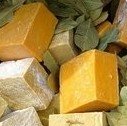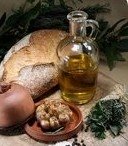Cachaca Recipe Please
What is the recipe for Brazilian Cachaca and/or Ecuadorian Cana? Both are sugar cane alcohol.
Thanks
***************************************************
To be honest I had never heard of Cachaca before you sent in this message. However, I did some research for you and the following information came from this website:V.Brazil
Perhaps we have a reader out there who can give you a recipe for homemade Cachaca.
In short, this is the traditional process:
1. Sugar cane cultivation - any one of the hundreds of varieties of sugar cane can be used to make cachaça. The difference between one or another is more related to productivity, amount of juice or sugar content, than to the quality of the cachaça. And don't forget: no poisons, fire or other ecologically damaging practices.
2. Milling - the sugar cane is ground, usually in a conventional mill, in order to extract the juice, commonly known as garapa. At the milling stage, two factors have a decisive influence on the degree of acidity of cachaça: cleanliness and hygiene of the mill and the time between cutting and milling the sugar cane (the shorter the time between cutting, transport and milling, the better).
3. Fermentation – the garapa goes from the mill to tanks or vats to improve the final product: extra filtering, leaving it without bits of bagasse or any solid residues. Every day, the containers receive new and clean garapa, whose sucrose content must be about 15 brix (scale that indicates the sucrose level, measured by a device called sacarimeter) and pH of 4.8 to 6.0. In the small-scale process of production of cachaça, using "caipira" fermentation, about 20% of the container is permanently filled with toasted ground maize or ground maize and a small amount of soy bran and rice bran. In the organic nutrients soaked in garapa, microorganisms proliferate, among which the yeasts, or eucariot cells, predominantly saccharomyces and schizosaccharomyces, which are the most efficient in turning sucrose into ethanol. The conversion of the sugar into alcohol provides the transformation of garapa into must, which is the substance ready for the distillation phase. In good conditions, fermentation time varies from 12 to 24 hours, including a decantation period.
alambique, tanks where cachaça is fermented
A cachaça is good or not (in flavor, aroma, lightness, smoothness, the "next day") depending on each step of the production process. But the set of steps in the fermentation phase is the most important and difficult to manage. Just remember that, in practice, what we call fermentation is the creation of living beings, yeasts, not visible to the naked eye, extremely sensitive and demanding as to feeding schedules (renewal of the naturally sweet garapa), rest time (decantation), environmental conditions (temperature of the place, cleanness of the container, etc.) and conditions for reproduction and renewal of the cells.
If you have the chance to visit the premises of a still, prioritize the vital part where fermentation is carried out and observe and ask about five quality indicators of the process that have a direct influence on the quality of the final product:
3.1. when you arrive, take a deep breath and feel whether the aroma is of ripe fruits, mild and pleasant, or if it smells of alcohol and something stale, as if something were decomposing and exhaling acidity.
3.2. check whether there are flies and mosquitoes in the fermentation room. The presence of "vinegar flies" (drosophilae) indicates infection by ascetic bacteria that increase the acidity of the must and of the final product.
3.3. another indication of the quality of the fermentation (that is, the creation of yeast) is a foamy appearance on the surface of the must, making it look as if it is boiling. It is the action of the yeast on the sugars, causing the formation of carbonic gas at the ratio of one molecule of the gas for each molecule of ethanol. Also with the naked eye, pay attention: the occurrence of bubbles is a bad sign (the bigger, the worse) and a good sign is a movement similar to the boiling in cooking, specially in making jam.
3.4. ask about garapa renewal schedules, time of decantation of the must and brix measurement (sucrose content) of the garapa when it goes into the vat. The more consistency and discipline, the better.
3.5. a key question for an important piece of information: how often is the leavening renewed, changed, remade? A good quality indicator is whether it doesn't "weaken", "get ill", or "die" at least throughout the conventional harvest period, of about six months. For those who produce all year round, it should be in good condition all year round, just needing to be oxygenized from time to time.
4. Distillation – after feeding on the sugar of the garapa, the yeasts start turning it into must, making the sucrose content fall from about 15° Brix to zero. Then the must without sucrose is left to rest, for decantation and for the yeasts to "rest", and after that it is placed in containers called alambiques, which are huge "pans" that can hold a hundred to a thousand liters of must.
The distillation of cachaça occurs by heating (direct fire or boiler) the must that starts to evaporate when boiling. The vapor goes up into the alambique and turns into liquid, condensing when it comes in contact with the bottom of the hood filled with running cold water.
In this phase of distillation, it is absolutely vital to remove the first liters of cachaça (this first part is called "head") that are inevitably contaminated by elements that are damaging to the health and good taste of the consumer. After these more volatile elements are removed, the distillation enters the stage of production of the best part of cachaça, which is called "heart". This better quality product usually represents only about ten percent of the total must. After the "heart" comes the "tail" or "weak water", which is as damaging to the consumer's health and well being as the "head".
This is where it becomes evident that quantity and quality are incompatible in true home-made and ethical production of excellent cachaça. The condition for obtaining an excellent product is not to mix "heart" with "head" and "tail".
5. Storage and Aging – bottling new cachaça and placing it in the market without aging should be considered a threat to public health and placing new cachaça without bottling it should be a matter for the police.
Storing cachaça in barrels, large vats or casks made of hardened wood makes a huge difference in flavor and occurrence of volatile elements. In these circumstances, there are striking differences between the drink produced on the same day, stored one month and aged six months, particularly if the wood is good in terms of pores, age and oxygen exchange, without interfering with flavor, such as oak or balsam (in glass the aging process is very slow, taking years to reach the aging point that takes months in wood)
Regards
Kathryn
Did you find this page helpful?
Sharing is a way of saying, "Thanks!"
Follow Us and Keep Up to Date
Go back to the Home Page





